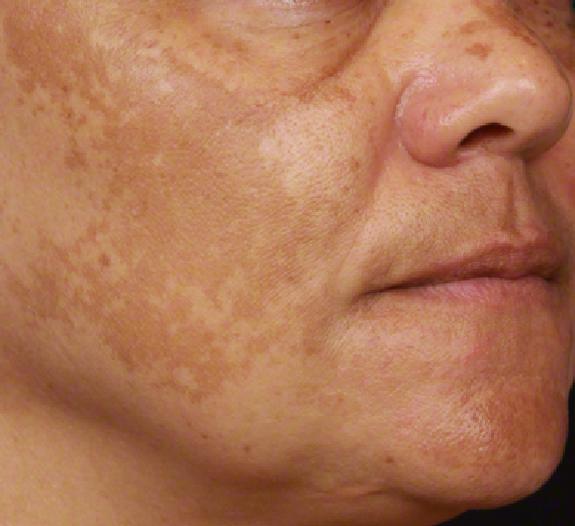
General Measures
First and foremost limited sun exposure and sun protection are recommenced along with which a combination of topical, oral, and procedural treatment modalities is helpful. Year-round life-long sun protection is recommended and the use of broad-spectrum very high protection factor (SPF 50+) sunscreen applied to the whole face every day. It should be reapplied every 2 to 3 hourly, if outdoors during the summer months. Wear a broad-brimmed hat. Discontinue hormonal contraception in females. Makeup or skin creams can be used to camouflage the pigmented lesions.
Treatments
Skin lightening creams with quinol (2–5%) based formulations applied accurately to pigmented areas at night for 3–4 months is useful. Self- medication with steroid containing creams should be strictly avoided. Various new topical agents under investigation include zinc sulfate, resveratrol, 4-hydroxy-anisole, 2,5-dimethyl-4-hydroxy-3(2H)-furanone and/or N-acetyl glucosamine.
Oral medications including tranexamic acid and glutathione for melasma are under investigation,
Chemical peels with glycolic acid, lactic acid, TCA, laser therapy with Q-switched Nd YAG, carbon dioxide or erbium: YAG resurfacing lasers and microdermabrasion are used in resistant cases.
Melasma cannot be fully cured, however multiple treatment options available can improve the appearance. Melasma tends to recur and recurrence rates are higher if sun protective measures are not adequately followed.
 Whatsapp
Whatsapp Facebook
Facebook Twitter
Twitter Instagram
Instagram Linkedin
Linkedin Pinterest
Pinterest